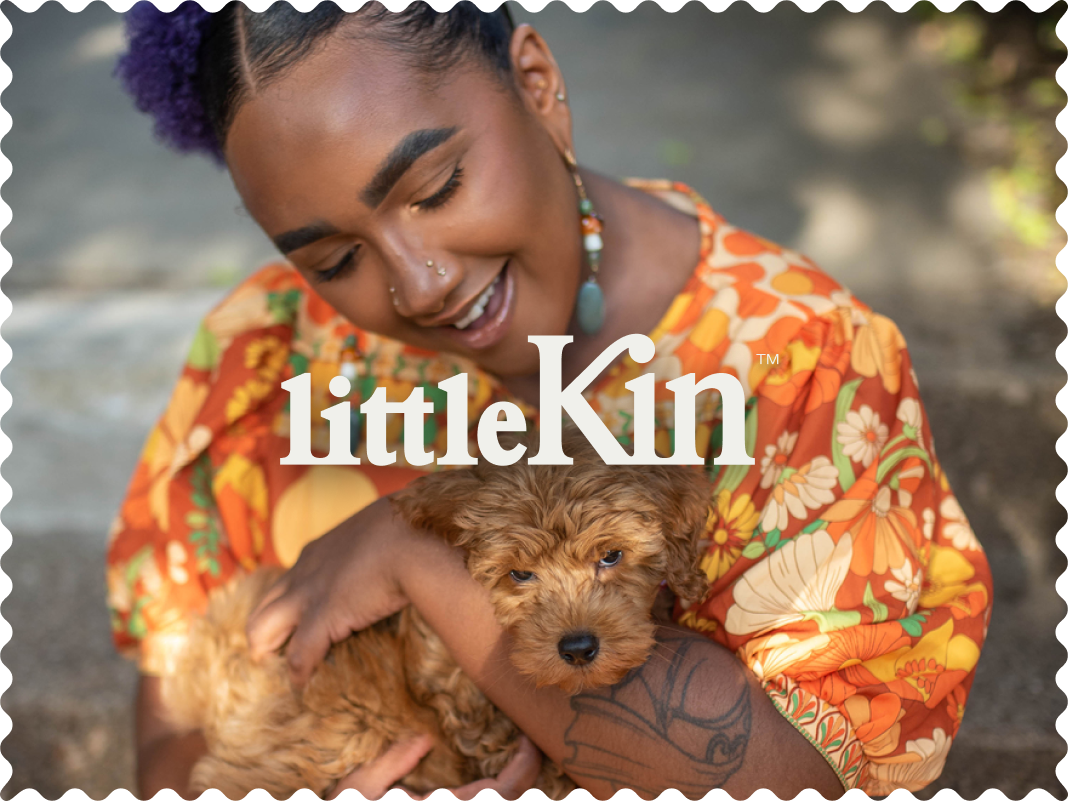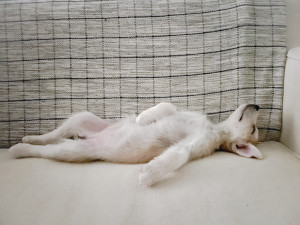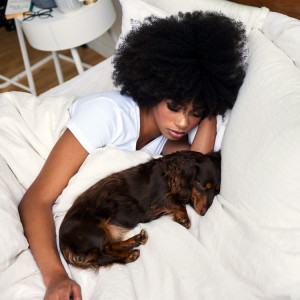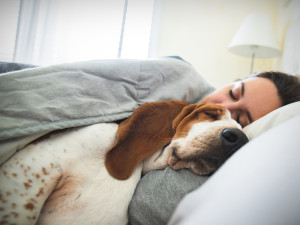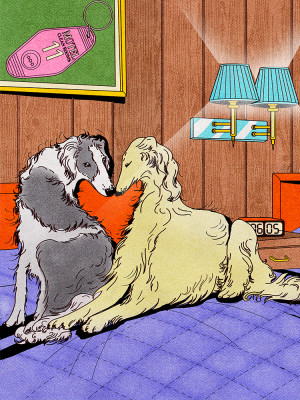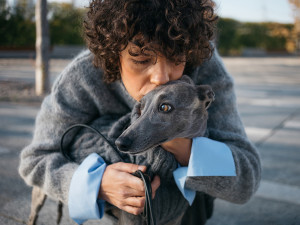Why is My Dog Extra Snuggly in the Morning?
There is a reason behind those AM cuddles
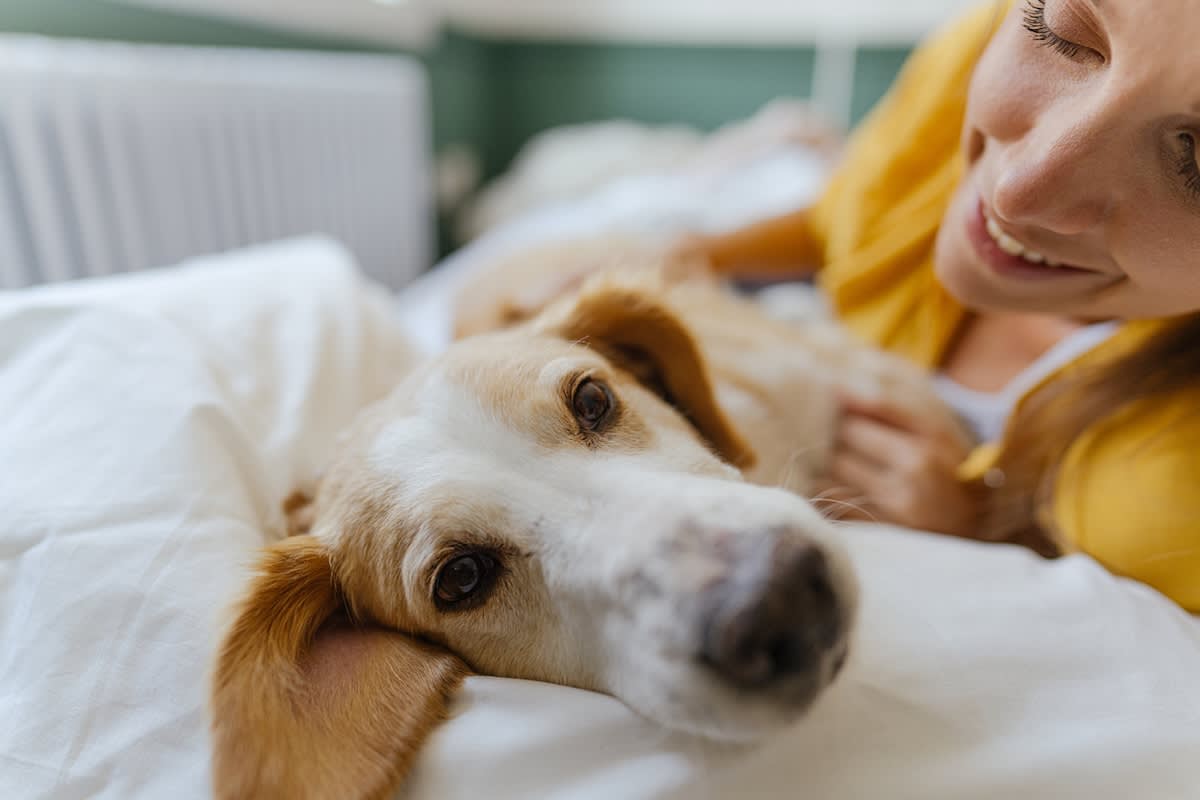
Share Article
I’m half asleep as I hear the tip tap of my dog Lucy’s paws as she trots along the wooden floor in our bedroom. There’s a pause, I can feel her presence at the end of our bed. She sits like a good girl, her nose peeks over the top of the duvet. It’s probably about 6am, the light sneaking in through the curtains. “Come on then,” I’ll say, my eyes squinting in the semi-dark as Lucy jumps in between my husband and I.
It’s my favourite moment of the day, it’s how we wake up each morning. In fact, our AM snuggles have become our routine. And as I observe the quotidian of our lives together, I’ve noticed that Lucy is at her snuggliest in the morning. It’s the time of day she gives out most of her affection. And I savour every second of it. Her warm body coiled into mine.
If your dog’s extra cuddly in the morning, too, it turns out, there’s multiple reasons for it. Veterinarian Dr Berkcan Yanaropens in new tab believes we can understand more about dogs being affectionate in the morning by looking in more depth at both their biology and behaviour, here’s what I found out.
The biological reasons behind morning cuddles
Biologically, Dr Yanar explains that the circadian rhythms of dogs influence their mood and energy. “During the night, their bodies are going through a time of fasting,” he explains. “And cortisol is the hormone that wakes them up and helps them deal with stress” – which in dogs is, apparently, at its highest in the mornings.
Get ready for the science bit: “Upon the arrival of morning, a dog’s suprachiasmatic nucleus (SCN) of the hypothalamus [the central clock of the body, FYI], senses light changes from the eyes and informs the pituitary gland to discharge adrenocorticotropic hormone (ACTH),” says Dr Yanar. “ACTH is then carried through the blood to the adrenal glands, which are told to secrete and release cortisol.” And this is why cortisol would usually be at the highest levels during the early morning. “It’s a coordinated effort to move the body from sleep towards waking,” says Dr Yanar.
So, on waking for the first time, “cuddling enables your dog to release oxytocin, the ‘love hormone’,” Dr Yanar continues. “And that reduces stress and strengthens their bond with you. This endocrine interaction guarantees that they become more affectionate and relaxed on waking.”
The social reasons
There isn’t much actual evidence to support the idea that dogs would display temperament differences at various times of day, says professor of psychology Dr Zachary Silver, who runs the Canine Intelligence Lab at Occidental College in Los Angeles. But, he theorises: “It would generally make sense that dogs would seek out closeness to humans before, during and after sleeping. Evolutionarily, the period of time that we sleep was one of our most vulnerable, so physical closeness could have been a key tool for environmental protection, both in terms of safety from predators and physiological factors such as hormonal activity and temperature regulation.”
Behaviourist Rima Chehlaoui at Even Better Dogs K9 Behaviour and Trainingopens in new tab is constantly studying the reasons why dogs behave the way they do, so she can help her clients improve their relationships with their pups. She says there’s a study of dogsopens in new tab between 16 weeks and 12 months old, which found that 86 percent of the dogs who had access to people overnight still continuously chose to be around them when they were teeny puppies and more independent one-year-olds. “In general, dogs are social animals and are well adapted to living in groups,” says Rima.
The behavioural reasons
Your dog also might want to be close to you while you’re in bed because an attachment bond has been formed. “There’s a study that found that dogs displayed a variety of attachment behavioursopens in new tab; they also greeted their owner more enthusiastically and for longer periods in comparison to a stranger.”
And here’s the thing about cuddles, if your dog jumps in for them, it means they love them as much as you do. “Affection and praise can be seen as positive reinforcement by your dog,” says Rima. “So you’ve rewarded your dog for jumping into the bed for cuddles and a rewarded behaviour is more likely to recur.”
The cynics among us might think their dog is only cuddling them because they know that means they get brekkie quicker. “I would put to you that the cuddles themselves are reinforcing,” says Rima. “For sure, though, the cuddles could be perceived as a behaviour that is rewarded especially if breakfast comes immediately after.”
Morning offers the first chance for a dog to re-establish contact with their humans after some hours of sleep, confirms Dr Yanar. “Dogs are pack animals, and being close is one way in which they feel secure and reaffirm their pack connection.”
Dr Yanar says that some breeds are more likely to love cuddling, including Golden Retrievers, Labradors and Cavalier King Charles Spaniels. “They’re more likely to require physical contact and may be especially clingy in the morning,” he says. “Even personality comes into play, as social or separation anxiety-prone dogs can be even more anxious to cuddle in the morning.”
Dr Yanar also says there is one very simple yet applicable element – “After a cold night’s sleep, dogs prefer to cuddle in order to retain body heat and receive the safety of the human partner,” he explains.
Does your dog know how you feel in the morning?
Your dog may notice if you’re not a morning person and very grumpy first thing. “Your dog will notice grumpiness due to body language and signals as well as our facial expressions,” explains Rima. “For example, a study found that dogs can discriminate between emotional expressionsopens in new tab in human faces.” Of course, when we wake up in a funk our facial expressions will be different from when we are happy. “And so much of dogs’ communication is through body language and signalling – even if it is very subtle,” adds Rima.
There’s also evidence to suggest that dogs react differently to human stress odours and relaxed odours, says Rima. So if you are very much not a morning person, those AM snugs are even more vital to get that oxytocin boost in both of you. “Positive attitudes and affiliative interactions contribute to the enhanced well-being of both species,” says Rima. So make sure you make time for morning, noon and night cuddles with your pup.
Resources
Kinsman, Rachel, et al. “Sleep Duration and Behaviours: A Descriptive Analysis of a Cohort of Dogs up to 12 Months of Ageopens in new tab.” Animals, vol. 10, no. 7, 10 July 2020, p. 1172, https://doi.org/10.3390/ani10071172.
Prato-Previde, Emanuela, et al. “I s the Dog-Human Relationship an Attachment Bond? An Observational Study Using Ainsworth’s Strange Situationopens in new tab.” Behaviour, vol. 140, no. 2, 2003, pp. 225–254, www.jstor.org/stable/4536022.
Müller, Corsin A., et al. “Dogs Can Discriminate Emotional Expressions of Human Facesopens in new tab.” Current Biology, vol. 25, no. 5, Mar. 2015, pp. 601–605, https://doi.org/10.1016/j.cub.2014.12.055.
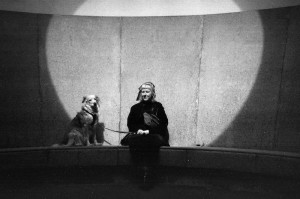
Alice Snape
Alice Snape is a freelance writer and editor whose work has featured in Cosmopolitan, Metro, Red, Vice, amongst other publications. Her rescue dog Lucy is the love of her life – probably because she’s an anxious weirdo like her. You’ll likely find them both curled up in bed – Alice’s favourite place to write from – or out having an adventure together in the park…
Related articles
![a puppy sprawled out on the couch sleeping]()
Is Your Puppy Sleeping Enough?
Four signs your puppy is ready for a nap
![woman with black curly hair sleeping in bed with her long hair daschund]()
Safe Sleep With Your Small Dog
Is there anything better than snuggling up to your pup all night? Here’s how to do it safely
![Woman and dog sleeping together in bed]()
Where Should Your Dog Sleep At Night-Time?
It’s a personal preference, but here are the pros and cons
![An illustration of 2 dogs on a bed]()
Three’s a Crowd: When One Partner Doesn’t Want the Dog in the Bed
You want them to cuddle up; your partner doesn’t. Here’s how to handle the great bed debate
How to Tell If Your Dog Is a Hugger – Or Not
Boundaries, folks. Boundaries
